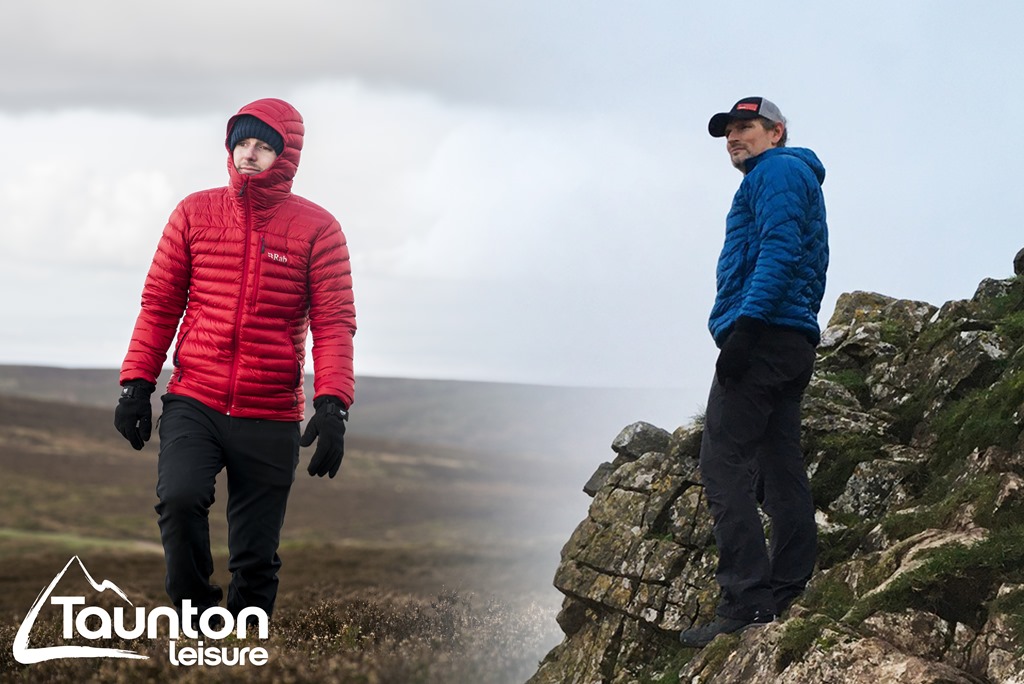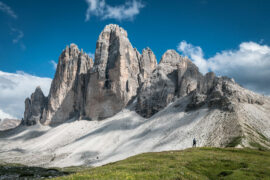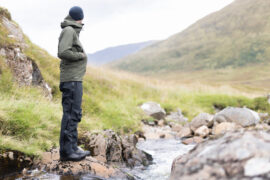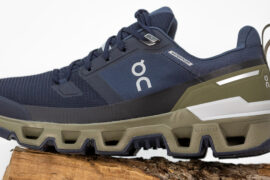We’re taking the time to explain the key differences and what you can expect from each form of technical insulation.
…
We cannot deny it, the cold plays a huge part in the obstacles faced when getting outdoors. Whether you’re simple heading on a day walk through the hills or ascending a grand peak over several days, there are certain times of year where decent insulation is absolutely to essential to your time outdoors and your wellbeing.
Whether it is a nice puffy jacket or sleeping bag, insulation comes in many forms but certainly works with the same principle in mind and that is trapping your body warmth as it rises from you and holding it right next to you so that the cold cannot make its way in. It is exactly how the insulation in your loft works, or the duvet on your bed. Heat rises from its source and quickly escapes, insulation is what prevents it from doing so.
One of the questions we are most often asked in our stores or online is which form of insulation is best in outdoor gear, down feathers or synthetic alternatives. Perhaps frustratingly, like many questions regarding outdoor gear, the real answer is of course …. that depends. We’re going to be explaining the key differences between these two main forms of insulation and explaining which conditions each would be considered the best
What are the key differences in performance?
To speak broadly, the two mains types of insulation used today in outdoor gear are such as jackets and sleeping bags are either natural down insulation or synthetic insulation. In truth, both have their pros and cons. Down is lighter in weight and weight-for-weight it is actually warmer than synthetic insulation. So that answers it right? I’m afraid it isn’t quite as simple as that as down fails to insulate when it’s wet, not ideal for our famously soggy climate. Synthetic insulation, on the other hand, maintains its insulating power in damper conditions. Let’s take a closer look at each and see the key difference between the two.
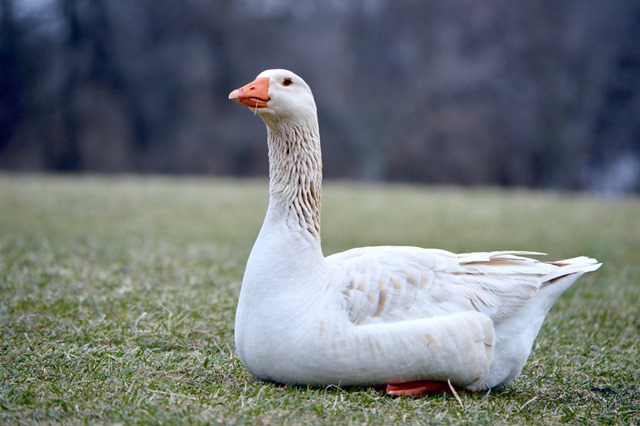
What is down insulation?
Down comes from the undercoat of bird feathers, most commonly duck and geese in regards to clothing. They are the finest feathers closest to the bird’s body. These light, fluffy feathers are what the bird uses to keep itself warm. Water birds such as ducks and geese from cooler climates have the best insulative down. Down feathers trap warm air between their loose tendrils helping to prevent heat loss. Neither down or synthetic insulation actually create heat; they simply and effectively maintain the body heat which your body generates.
All of our brands in store have made or selected their own ways of making the down used as ethical as is possible, all down within the Taunton Leisure range is sourced as a by-product of the meat industry and is fully traceable to its source, this is an important step in ensuring the animal welfare involved in sourcing high-quality down. Taunton Leisure and all of the outdoor brands within our range abhor animal cruelty such as live-plucking and force-feeding. Down has the lowest carbon footprint of any fill material.
Down structure is made up of a cluster of down tendrils covered in smaller hairs, when allowed to get wet, water soaks the down structure and sits where warm air should go, not allowing it the stay and making the down clump together, ridding it of its insulative properties.
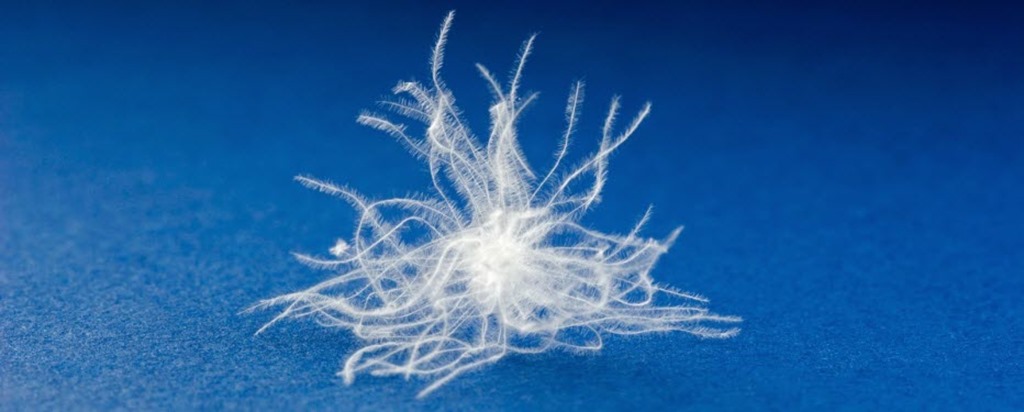
What does down “fill power” mean?
Fill is is the amount of down within the garment or product. It’s often referred to as fill power, because the higher the fill the more powerful the item is at insulating. Fill power is determined by placing one ounce of down into a graduated cylinder and measuring the volume in which the down occupies in cubic inches. A greater volume means a higher fill power as the down itself has longer tendrils and thus can trap more air, keeping you warmer. If you take 2 different jackets of equal weight, one with a fill power (FP) of 650 and another with 750FP, the jacket with the higher fill power will be a warmer jacket. Because of this, you can put less 750FP down in a jacket in order to make it just as warm as a jacket containing more 650FP down, making it also able to pack down smaller and be lighter in weight.
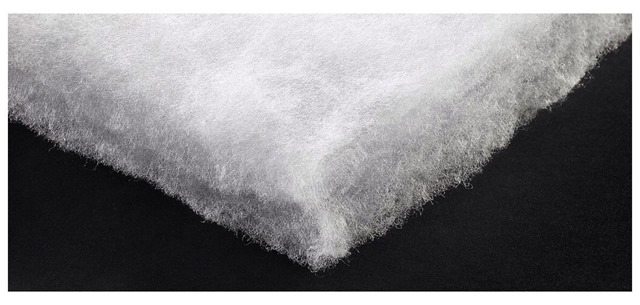
What is Synthetic insulation?
Synthetic insulation is more often than not made of polyester, either raw or recycled. It is engineered to mimic down’s lofty tendril structure in order to trap warm air for insulation, usually by being processed into fibres and then pressed into sheets or pads. This man-made structure is not as fine as down feathers and is not nearly as compressible to achieve the same insulative level as down, you would need more synthetic insulation causing it to be bulkier and heavier. Where synthetic insulation stands above down though is in its ability to keep over 90% of its insulative properties in wet or humid conditions. It also dries much faster making it easier to wash and care for. Polyester fibres are also a fair bit more durable than down.
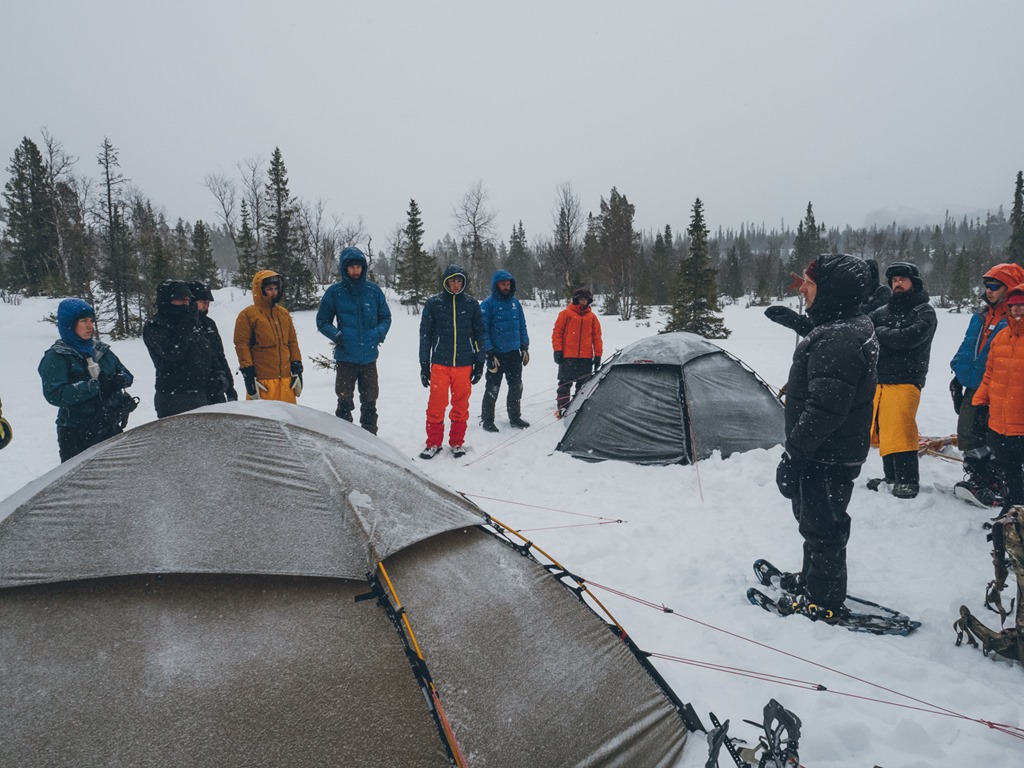
When down insulation is best
Down is more suitable in cold dry conditions. Very cold conditions such as above the arctic circle or atop high peaks are often also very dry with moisture taking the form of snow and ice. Down is the perfect solution to dry-cold climates or on expeditions where weight is an important factor.
Down does not usually do so well in wet conditions unless protected by a waterproof shell, however many of the brands within our range use water-resistant treatments on their down which pushes it to be more resistant to moisture allowing you more time to throw on your trusty waterproof when the sky begins to pour.
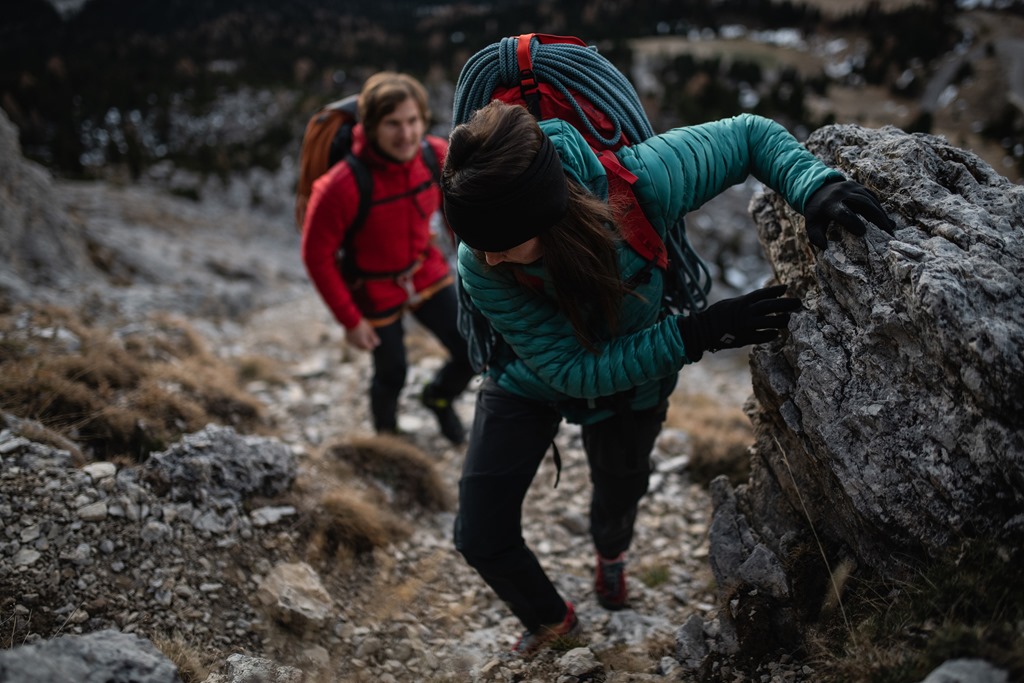
When synthetic insulation is best
Very versatile, synthetic insulation is easy to take care of, keeps you warm in a variety of conditions, including cold and soggy environments and is more cost effective. It is particularly useful in the UK as well as much of mainland Europe’s soggier, off mountain conditions.
Though less packable and often heavier than down, many brands carry excellent options if you’re looking for weight-prioritised synthetic options such as Cirrus from Rab, Plumafill from Patagonia or Thermoball from The North Face.
Shop Men’s Insulated Jackets HERE
Shop Women’s Insulated Jackets HERE
or
Shop Sleeping Bags HERE

